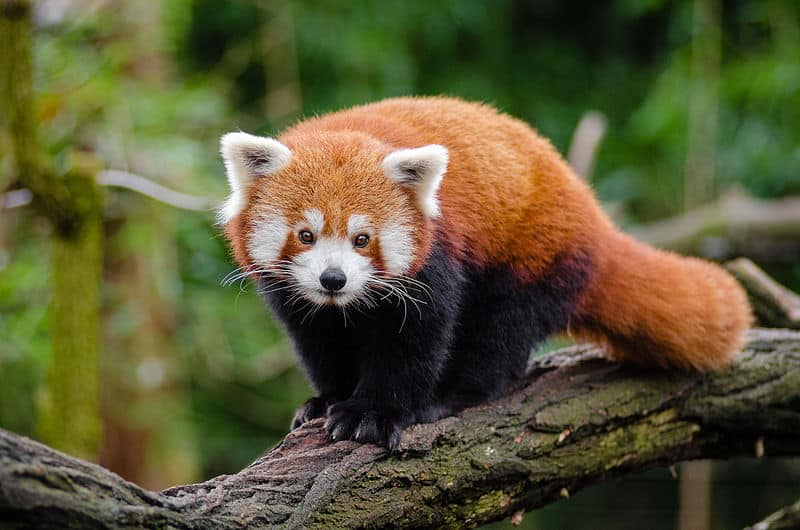
Red Panda Facts
- An important fact should be noted about the marvelous mammal known as the Red Panda. That’s the nature of its relationship to a certain other species. Although it’s a related species, it does not bear a close relationship to the much better known Giant Panda.
- Also, the animal actually represents the only species in its own family. However, others did exist previously. Quite sadly, these others have now become extinct. Nevertheless, experts do currently recognize two known subspecies of the remarkable mammal.
- Further, the IUCN lists the magnificent creature as Endangered. This highly unfortunate status occurs primarily due to its numbers. In point of fact, its known population now appears to total fewer than 10,000 individuals still in existence.
- Finally, the Red Panda now faces numerous threats to its existence. These certainly include climate change and habitat loss. But, other factors also threaten the creature. These include such factors as hunting and competing with local livestock for food.
Related Articles
Red Panda Physical Description
First of all, the marvelous Red Panda does not possess the sheer size of its better known relative. But what it lacks in size, it makes up for in charm. Further, in fact, the remarkable animal only grows to a size slightly larger than your average household cat.
That holds true due to the surprising fact that it only averages a head and body length measuring about 20 – 25 in 50 – 64 cm). In addition, its bushy tail adds an impressive average of around 11 – 23 in (28 – 59 cm). But this does vary between individuals.
Also worthy of note, this beautiful species displays only a very slight degree of the trait of sexual dimorphism. Therefore, both genders attain an average weight between 6.6 – 13.7 lb (3.0 – 6.2 kg). Yet females do sometimes remain slightly lighter than males.
Furthermore, the fur of the Red Panda tends to grow relatively long, and also quite soft. Also, the color of the upper part of the body generally shows a light reddish-brown. Meanwhile, the lower portions show black, and the face appears whitish.
- Kingdom: Animalia
- Phylum: Chordata
- Class: Mammalia
- Order: Carnivora
- Family: Ailuridae
- Genus: Ailurus
- Species: A. fulgens
Red Panda Distribution, Habitat, and Ecology
It must be noted that, quite regrettably, the incredible Red Panda only inhabits a moderately extensive habitat range. To be more precise, this range of habitation extends from the Himalayas to the southwestern portions of the country of China, in Asia.
Yet even there, the habitat preferences of the small mammal remain quite specific. Although exceptions do occur, these primarily consist of temperate forests. Also, the fascinating species generally inhabits altitudes ranging from 7,200 – 15,700 ft (2,200 – 4,800 m).
Further, the majority of specimens of the magnificent small mammal live a principally solitary life. That holds true due to the fact that adult individuals usually only come together during mating season. In addition, both genders tend to be quite territorial.
Furthermore, the animal also remains technically omnivorous in nature. However, bamboo actually comprises by far the great majority of its diet. Nonetheless, individuals will on occasion consume birds, small mammals, flowers, eggs, and berries.
Finally, the natural predators of the marvelous Red Panda mainly consist of the Snow Leopard and other larger carnivores in its range. Sadly, however, humans also pose a great threat to the animal. That’s because locals often hunt it for its fur.
Species Sharing Its Range
Check out our other articles on Earth’s Geothermal Marvels, Carolina Hammerhead Shark, Palawan Island, Thorny Dragon, Black Rain Frog, Coespeletia Palustris, Eurasian Red Squirrel
